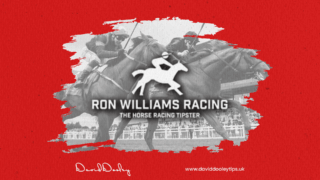Raw times don’t lie. In a sport full of opinions, speed ratings give you something real to work with. They strip out the noise and show you which horses are running the fastest under race conditions. For me, that’s an edge most punters overlook.
David Dooley doesn’t just glance at form figures. I want to know how quick a horse really is when it matters. Speed ratings, when used properly, give you a hard read on ability, performance under pressure, and how one runner stacks up against another in the same setup.
Contents
Why Speed Ratings Work
Speed ratings measure efficiency. They tell you how well a horse ran on the day, adjusted for ground, distance and conditions. A horse may have finished second, but if it clocked the best figure, I take notice.
That’s where the value often lives. Bookies price off results. I price off performance. When a horse has the best speed figure in the field but doesn’t carry a flashy win record, that’s when I move in.
When to Trust the Numbers
Not all speed ratings are equal. I focus on consistent figures across similar trips and going. If a horse has posted two or three strong numbers at today’s distance and under similar conditions, that’s a major tick.
I also like seeing improvement. If a horse’s ratings are trending upwards, especially after a stable switch or a change in trip, that tells me it’s still progressing. That kind of data gives you confidence others might miss.
Combining Ratings With Race Shape
Speed ratings matter most when the race sets up right. A front-runner with the top rating in a race with little early pace? That’s gold. A hold-up horse with strong late speed in a field of tired stayers? I’m in.
I use ratings to support my reads, not replace them. The numbers help shape the picture, but I still want to know if the horse is likely to get the chance to show it.
FAQs About Speed Ratings Horse Racing Data
What are speed ratings in horse racing?
Speed ratings are numerical values that measure how fast a horse ran in a race, adjusted for conditions like distance and ground.
How do speed ratings help punters?
They provide an objective view of performance, helping punters spot horses that ran better than their finishing position suggests.
Are higher speed ratings always better?
Higher ratings are good, but they need context. Consistency, conditions, and race shape all affect how useful that number really is.
When should you use speed ratings?
Use them to compare runners in similar setups. They’re especially helpful when form is mixed or a race lacks clear favourites.
Do bookmakers factor speed ratings into odds?
Not always. That’s why they’re valuable. When the market misses a high-rated horse due to a poor placing, there’s value to be found.
Summary
Speed ratings cut through the fluff and tell you what a horse really did on the track. David Dooley uses them every week to spot value where others are just reading results. They’re not a magic bullet, but when used with sharp analysis, they give you serious firepower.
If you want to see past the hype and back what’s proven under pressure, speed ratings are one of the smartest tools in the game.


